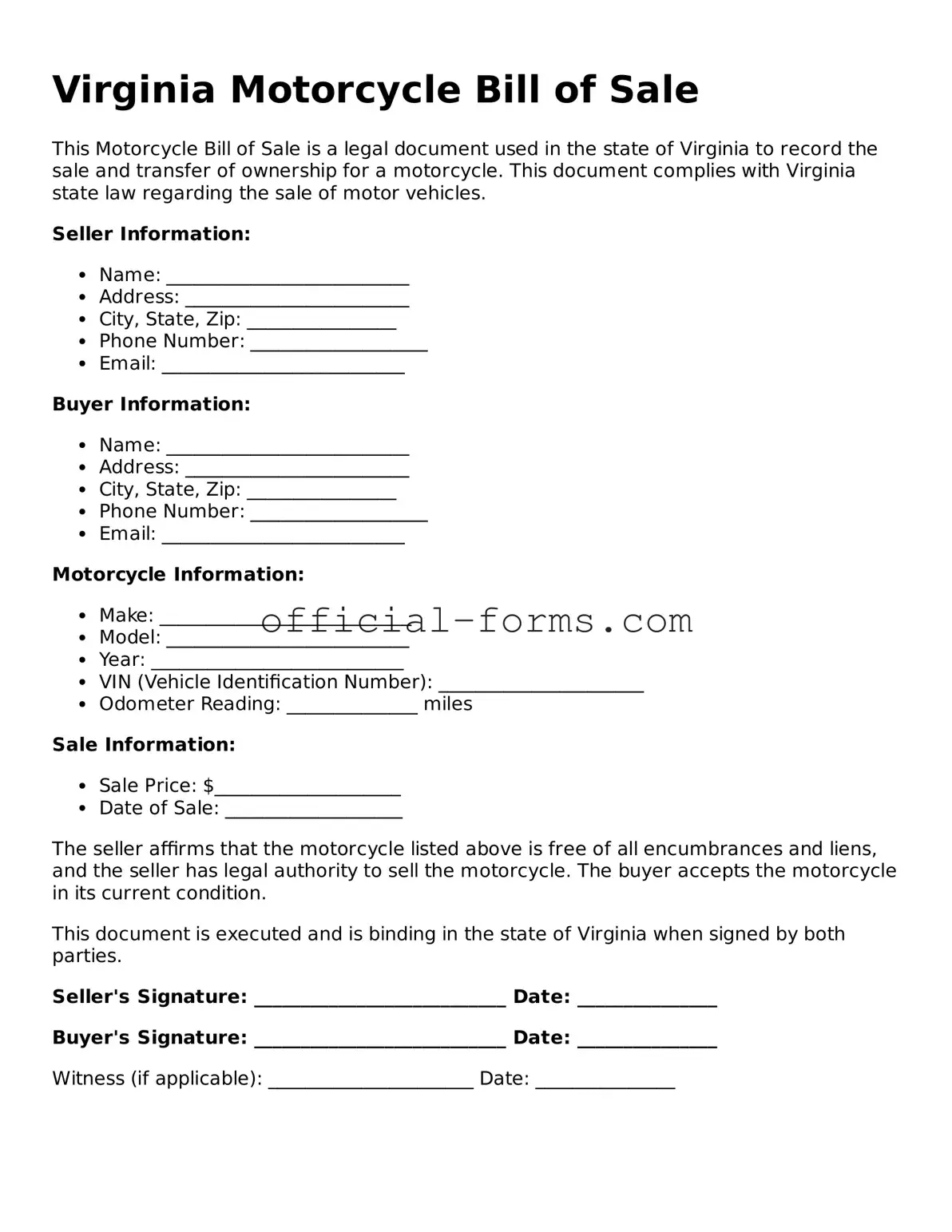Official Virginia Motorcycle Bill of Sale Document
The Virginia Motorcycle Bill of Sale is a legal document that records the sale and transfer of ownership of a motorcycle in the state of Virginia. This form serves as proof of the transaction and can be essential for both the buyer and seller, ensuring that all necessary details are documented. Understanding its components and importance can help facilitate a smooth transfer process.
Open My Motorcycle Bill of Sale Now
